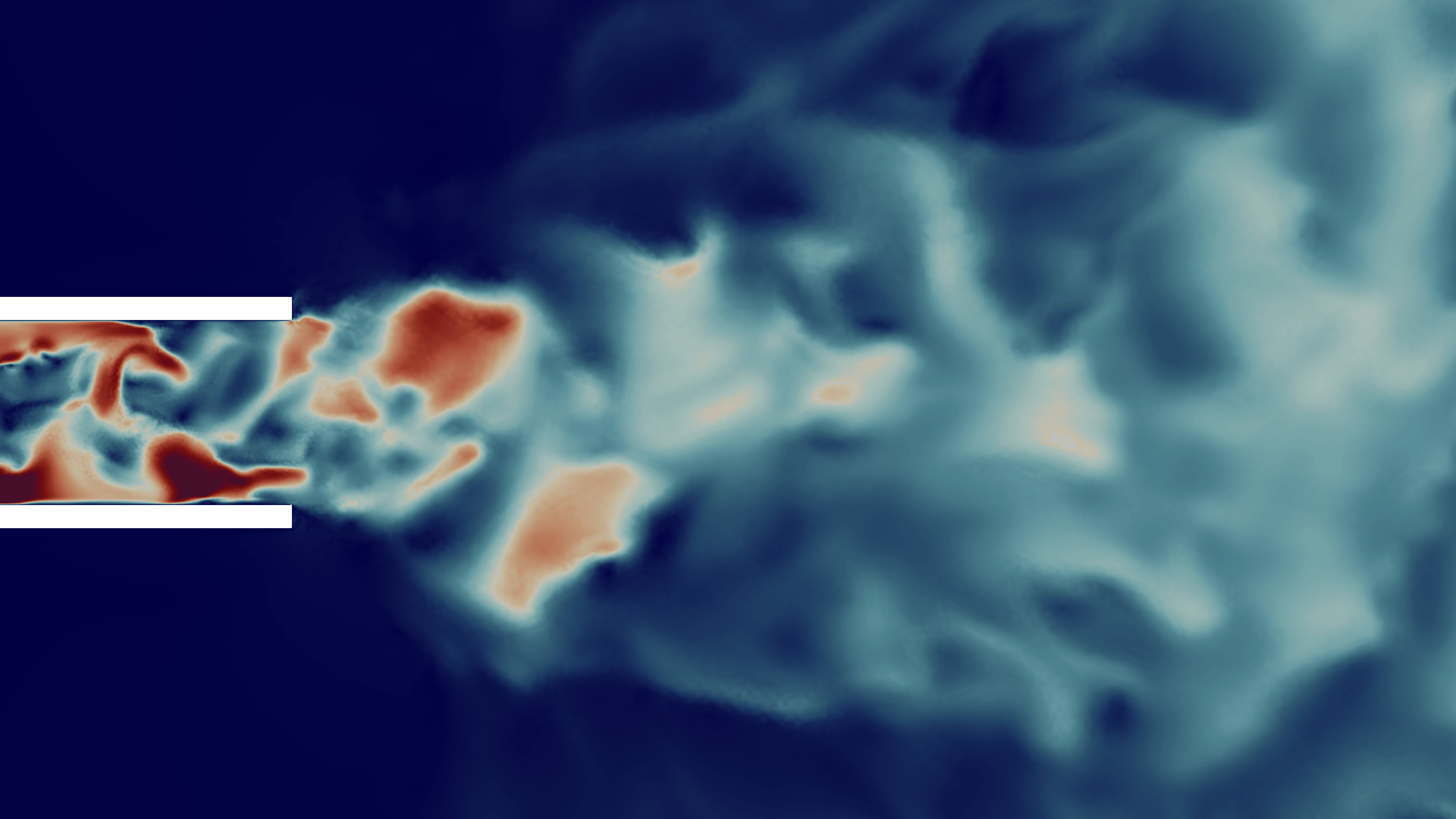As some of the largest names in technology experience slower growth, investors are turning toward sectors that still promise disruption and expansion. Defense, aerospace, and space technologies remain at the forefront of this trend. In 2025, global defense stocks — particularly those tied to quantum technology and artificial intelligence have shown significant gains. Within this context, quantum computing is emerging as a promising solution for critical challenges in simulation, particularly in Computational Fluid Dynamics (CFD).
This research applies a Hybrid Quantum–Classical Method (HQCM) to large-scale CFD problems using the Variational Quantum Linear Solver (VQLS). VQLS is particularly well-suited to the large linear and Hamiltonian-based systems characteristic of fundamental CFD equations such as the pressure–Poisson equation. Looking forward, such physics-based CFD simulations have the potential to replace a large share of traditional experimental testing, enabling rapid design iterations and supporting advanced capabilities such as digital twins of aircraft.
Traditional CFD and Its Limitations
According to NASA’s CFD Vision 2030 Study, there is a critical need for predictive capability across the full operational envelope of aerospace vehicles. In the last decade, methods such as Large-Eddy Simulation (LES) and Direct Numerical Simulation (DNS) have delivered high-fidelity insights into flow physics. However, they remain mostly limited to canonical configurations, making them less impactful for application-scale problems.
These limitations arise from computational cost. Wall-resolved LES and DNS, while accurate, are computationally intractable for full-scale aerospace simulations, even with exascale high-performance computing. Existing CFD methods also face challenges in predicting complex turbulent, separated, and transitional flows. Scaling to realistic problem sizes pushes against limits in memory, processing time, and cost.
For many PDE-based systems such as the pressure–Poisson equations, central to incompressible flow simulations, current methods cannot efficiently scale without severe compromises.
Why QCFD Is Promising
Quantum algorithms, and VQLS in particular, can directly address the large, sparse, and structured linear systems that arise from CFD discretization. These algorithms open the door to targeting the most computationally expensive portions of CFD workflows.
Today, however, the landscape for quantum software is more mature, with advanced simulators, error-mitigation libraries, and open-source resources widely available. This makes immediate research and investment into algorithms like VQLS both feasible and necessary.
Some of the Quantum approaches to CFD are being explored in three main directions:
- Schrödinger-type quantum dynamics (Q-HSE)
- Quantum Lattice Boltzmann Method (Q-LBM)
- Quantum Linear Solvers (QLS)
Q-HSE methods draw analogies between quantum mechanics and fluid dynamics, potentially offering efficiencies in specific cases. Q-LBM applies quantum algorithms to lattice-based discretization for mesoscopic flow simulations. Both approaches are promising but require large-scale, fault-tolerant quantum computers. QLS, on the other hand, is better suited for near-term devices, as it transforms non-Hermitian CFD systems into Hamiltonian-compatible forms. The Harrow–Hassidim–Lloyd (HHL) algorithm was the first in this family, offering exponential speedup under strict conditions but requiring deep circuits and idealized hardware. This makes it unsuitable for current noisy intermediate-scale quantum (NISQ) devices.
VQLS addresses some of these limitations by recasting the problem as variational optimization. A parameterized quantum circuit prepares an approximate solution, and a classical optimizer iteratively tunes these parameters to minimize a cost function. VQLS has already been applied to solve equations in heat conduction, Poisson flow, and Burgers’ dynamics. However, scaling VQLS for CFD still presents challenges.
BQP’s solution to Large Scale CFD
Circuit Complexity
Traditional VQLS requires decomposing the CFD system matrix into a large number of Pauli terms. This quickly leads to deep quantum circuits and high measurement overhead. An oracle-based block encoding technique significantly reduces quantum circuit depth, enhancing performance in large-scale simulations.
BQP’s hybrid quantum-classical framework demonstrates scalability and accuracy on 1D and 2D CFD problems, aligning closely with classical computational results. Oracle-based encoding produces much shallower circuits and allows cost function evaluation in a single circuit, lowering measurement demands and improving suitability for quantum devices.
Barren Plateau in Optimization
To overcome optimization challenges like barren plateaus, BQP employs Quantum-Inspired Optimization (QIO) for stable convergence. The commonly used COBYLA optimizer avoids explicit gradient computation and can handle noisy evaluations, but it converges slowly and is highly sensitive to initialization. COBYLA is replaced by BQP’s Quantum-Inspired Optimization (QIO) algorithm, which maintains search momentum, avoids barren plateaus, and provides stable convergence for large problem sizes.
Results
BQP’s HQCM framework was applied to the one- and two-dimensional Poisson equations and to a two-dimensional steady-state heat conduction problem. Dirichlet boundary conditions were used, and the quantum-assisted solutions closely matched classical reference results.
Key results include:
- Circuit depths on the order of 102 and gate counts on the order of 103.
- Feasibility for matrix sizes up to 213213 in 1D and 210210 in 2D.
- Requirement of only a single quantum circuit for cost evaluation, reducing measurement overhead compared to prior approaches.
- Stable convergence even for larger CFD matrices, with QIO avoiding barren plateaus seen in COBYLA.
BQP provides a scalable, quantum-assisted CFD approach that can be deployed on near-term quantum hardware. By addressing both circuit complexity and optimization bottlenecks, it establishes a viable pathway for integrating quantum algorithms into aerospace and defense simulation workflows.
The HQCM framework can extend to a range of PDE-based systems beyond CFD, including heat transfer and shallow water models. More broadly, it offers a structured, incremental path toward practical Quantum CFD solvers, bridging the capabilities of today’s HPC systems with the potential of simulation-driven quantum algorithms.





.png)
.png)
%20365382.png)




.svg)
.svg)
.svg)
.svg)